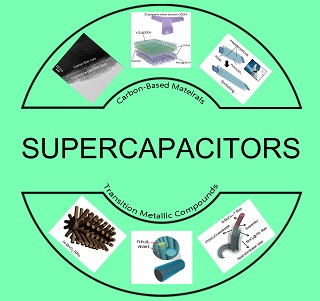

高性能碳基与过渡金属化合物基超级电容器电极材料的研究进展
收稿日期: 2017-03-20
修回日期: 2017-04-19
网络出版日期: 2017-10-28
基金资助
This work was supported by the Natural Science Foundation of China (21403306, and 2016YFA0202604), Guangdong Natural Science Funds for Distinguished Young Scholar (2014A030306048), Pearl River S&T Nova Program of Guangzhou (201610010080), Tip-top Scientific and Technical Innovative Youth Talents of Guangdong Special Support Program (2015TQ01C205) and Technology Planning Project of Guangdong Province (2015B090927007).
Recent Advances on Carbon and Transition Metallic Compound Electrodes for High-Performance Supercapacitors
Received date: 2017-03-20
Revised date: 2017-04-19
Online published: 2017-10-28
Supported by
This work was supported by the Natural Science Foundation of China (21403306, and 2016YFA0202604), Guangdong Natural Science Funds for Distinguished Young Scholar (2014A030306048), Pearl River S&T Nova Program of Guangzhou (201610010080), Tip-top Scientific and Technical Innovative Youth Talents of Guangdong Special Support Program (2015TQ01C205) and Technology Planning Project of Guangdong Province (2015B090927007).
林 顿 , 张熙悦 , 曾银香 , 于明浩 , 卢锡洪 , 童叶翔 . 高性能碳基与过渡金属化合物基超级电容器电极材料的研究进展[J]. 电化学, 2017 , 23(5) : 560 -580 . DOI: 10.13208/j.electrochem.170342
Supercapacitors (SCs) have stimulated intensive interests for their promising applications in electric vehicles and portable electronics, etc. Electrode material is the most important key component of SCs, which vastly determines the performance of SCs. Carbon and transition metallic compound materials have attracted considerable attention and been widely explored as electrode materials. However, the insufficient capacitance of carbon materials and unsatisfactory conductivity and cyclic stability of transition metallic compounds severely limit their implementation as robust SC electrodes. Herein, we highlight our recent efforts to boost the capacitive performance of carbon and metal oxide/nitride electrodes by rationally structural and componential design. The relationships between structures and performances, as well as the mechanisms are discussed. Finally, we also present our personal perspectives on the further research of these electrodes.

/
| 〈 |
|
〉 |